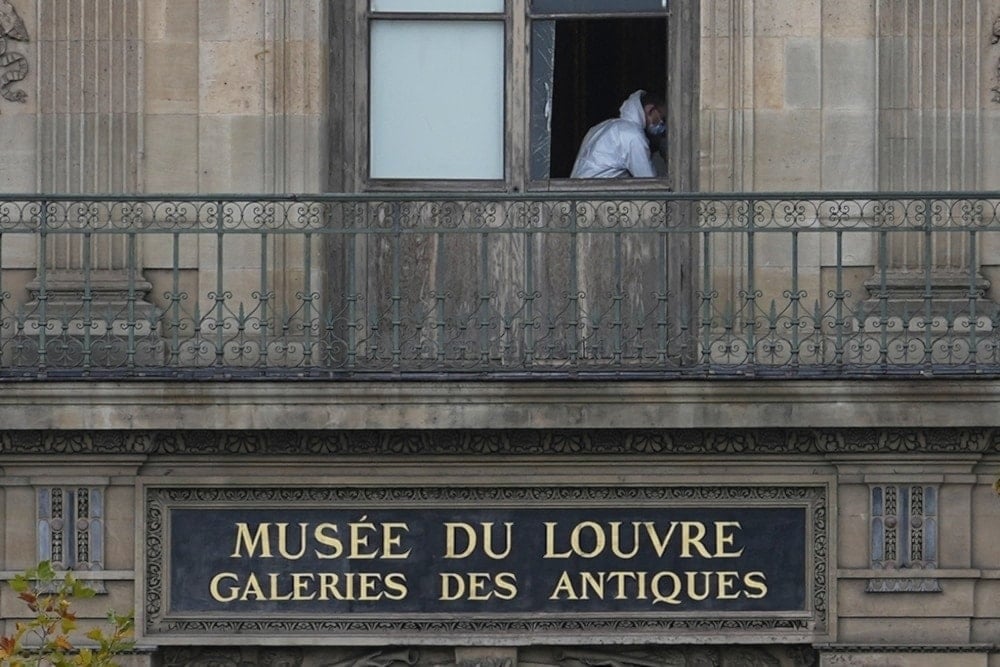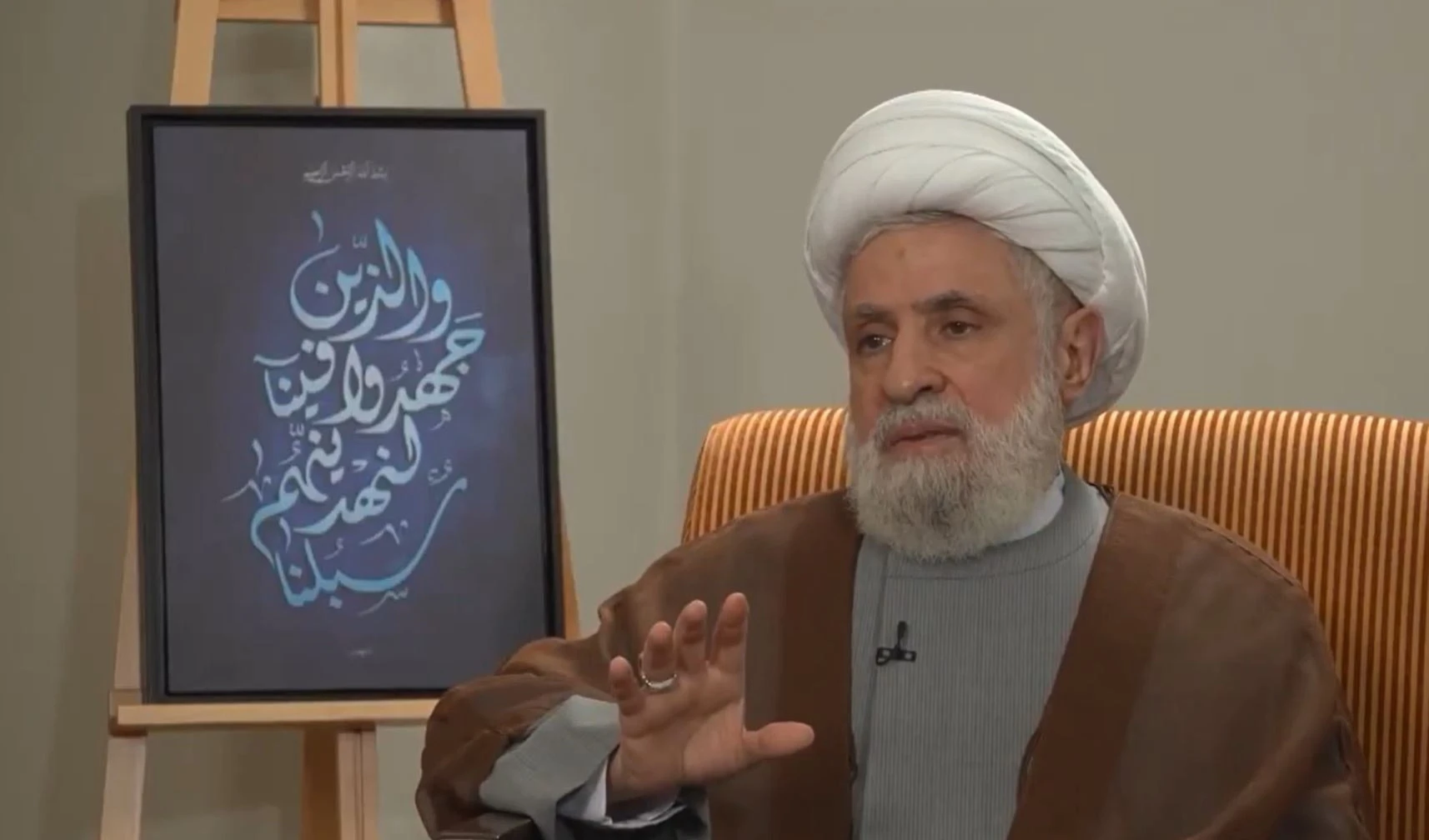Louvre jewel heist: Two arrested in €88 million theft
Two suspects are in custody after the daring Louvre jewel heist, as French investigators sift through DNA evidence in a bid to recover the stolen royal treasures.
-

A police officer works inside the Louvre museum, Sunday, October 19, 2025, in Paris. (AP)
French police have detained two suspects believed to have played a role in the theft of crown jewels worth an estimated €88 million (£76 million) from the Louvre Museum in Paris, one of the country’s most audacious robberies in recent memory.
The Paris public prosecutor confirmed the arrests on Sunday, following reports that one man was taken into custody late Saturday at Charles de Gaulle Airport by the armed robberies and serious burglaries unit.
Prosecutor Laure Beccuau did not specify how many individuals were detained or whether any of the stolen items had been recovered. However, sources close to the investigation told French media that a second suspect was arrested in the Paris region around the same time.
Arrests and confidentiality concerns
Beccuau criticized the premature release of details by several outlets, warning that it “could only jeopardize the work of more than 100 investigators mobilized to recover the stolen jewels and apprehend all of the perpetrators.” She said further information would be provided after the suspects’ pre-charge detention period, which under French law can last up to 96 hours for serious crimes.
According to French media reports, the first suspect was preparing to board a flight to Algeria, while the second, detained in Seine-Saint-Denis, north of Paris, had planned to travel to Mali. Both men, believed to be in their 30s, are known to police and have prior robbery convictions.
Le Monde reported that investigators had been monitoring them “for some time” before their arrests, while France Inter said both were residents of Seine-Saint-Denis, one of mainland France’s poorest and most crime-affected areas.
Forensic clues and ongoing investigation
Police identified the suspects through forensic analysis of items left at the scene, including gloves, a high-visibility vest, a motorbike helmet, angle grinders, power tools, a blowtorch, and a walkie-talkie.
Interior Minister Laurent Nuñez praised investigators for their “tireless work” but also urged discretion to avoid compromising the ongoing investigation.
Beccuau said on Friday that forensic teams were analyzing more than 150 DNA samples, fingerprints, and other traces collected at the scene, adding that she remained “optimistic” about the outcome.
Details of the brazen robbery
The theft occurred last Sunday morning when four men arrived at the Louvre, the world’s most visited museum, around 9:30 a.m. in a stolen furniture removal truck equipped with a lift. Two of them, dressed as maintenance workers in high-visibility vests, used the lift to access the ornate first-floor Apollo Gallery.
After smashing an unsecured window, they used disc cutters to open two display cases before escaping in the truck’s lift and fleeing on motorbikes driven by their accomplices.
The heist lasted less than seven minutes, with the pair spending just under four minutes inside the gallery. In their rush, they dropped a diamond and emerald-studded crown but managed to flee with eight other jewel-encrusted royal pieces.
Beccuau said last week the stolen jewels were worth “a spectacular sum, nearly €90m, but nothing compared to their historical value.”
Priceless royal treasures lost
Among the missing items are an emerald and diamond necklace gifted by Napoleon I to his second wife, Marie Louise, and a diadem set with 212 pearls and nearly 2,000 diamonds that once belonged to Empress Eugénie, wife of Napoleon III.
Nuñez told La Tribune Dimanche that the operation bore the hallmarks of organized crime and warned that the pieces could be dismantled for resale. “The loot is unfortunately often stashed abroad,” he said. “I hope that’s not the case; I remain confident.”
Security gaps and government response
While internal alarms functioned as designed, the museum’s director, Laurence des Cars, acknowledged that a security “blind spot” allowed the thieves to access the gallery undetected by external cameras. She told French senators last week that a camera near the Apollo Gallery had been “pointed in the wrong direction” and failed to capture the break-in.
Des Cars defended the Louvre’s €80 million security overhaul, noting that new surveillance coverage would soon include “video surveillance covering all facades.”
France’s Culture Minister Rachida Dati said Friday that she had requested the results of a formal investigation into the museum’s security measures by early next week, promising to “announce concrete measures to secure” the site.

 4 Min Read
4 Min Read








